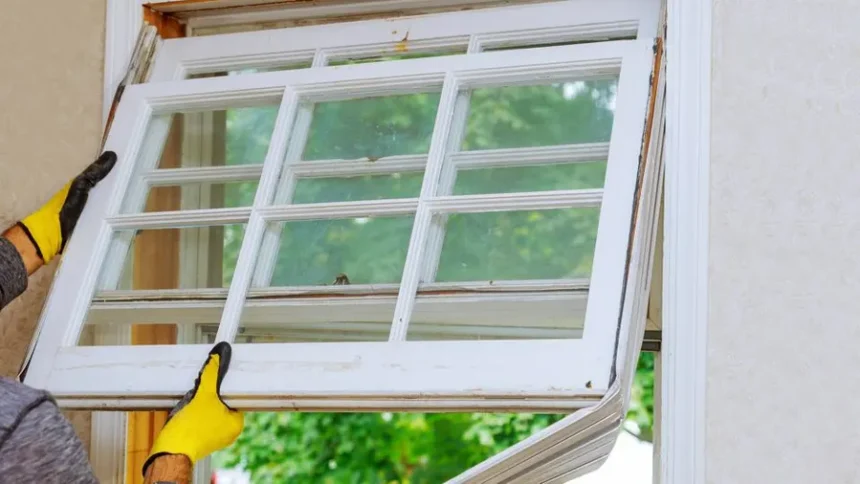Window replacement in Peoriais a significant home improvement project that homeowners undertake for various reasons including enhancing energy efficiency, improving home comfort, and increasing property value. While the process may seem daunting initially, understanding the basics of window replacement can simplify decisions and lead to successful outcomes. We will cover every aspect of window replacement, from when it’s time for new windows to the final installation and ongoing maintenance.
Recognizing the Need for Window Replacement
Identifying when to replace windows is crucial for maintaining your home’s comfort and energy efficiency. Several indicators suggest it might be time for an upgrade. These include noticeable drafts, increased energy bills, difficulty in operation, and visible wear like cracks or rotting frames. Windows over 20 years old typically do not have the energy-efficient technologies that newer models offer. Replacing old, inefficient windows with modern, energy-efficient ones can drastically reduce heating and cooling costs and improve the overall comfort of your home.
Types of Windows: Exploring Options
Selecting the right window type is vital in achieving your home’s desired look and functionality. Common types include double-hung, casement, slider, bay, bow, and awning windows. Double-hung windows are versatile and suitable for almost any home style, offering excellent ventilation and easy maintenance. Casement windows, hinged on the side and open outward, provide superior energy efficiency and are ideal for hard-to-reach areas. Bay and bow windows create an appealing aesthetic, making rooms appear larger. Understanding these options can help you choose the best type for each room in your home.
Choosing the Right Material for Your Windows
The material of your window frames is another important decision that affects durability, maintenance, and insulation. The most popular materials include vinyl, wood, aluminum, and fiberglass. Vinyl windows are affordable, durable, and offer good insulation. Wood windows offer a classic look and excellent insulation but require more maintenance. Aluminum windows are lightweight and strong with a modern appearance, though they conduct heat and cold, reducing energy efficiency. Fiberglass windows are robust, maintenance-free, and provide exceptional insulation. Each material offers distinct advantages and challenges, so consider your climate, home’s architecture, and personal preferences when choosing.
Energy Efficiency Considerations
Modern windows come equipped with features designed to enhance energy efficiency. Technologies such as double or triple glazing, low-emissivity (Low-E) coatings, and argon or krypton gas fill significantly improve thermal performance. These features help keep your home cooler in the summer and warmer in the winter, reducing the strain on your HVAC system and lowering energy costs. When shopping for new windows, look for the Energy Star certification, which indicates the windows meet strict energy efficiency guidelines set by the U.S. Environmental Protection Agency.
The Installation Process: What to Expect
Proper installation is crucial to the performance and longevity of your new windows. Choosing the right contractor is as important as selecting the window itself. A professional installer will ensure the windows fit perfectly, are sealed correctly, and function as intended. Expect some disruption to your daily routine during installation, but a skilled installer will minimize this impact. Discuss all aspects of the installation process with your contractor beforehand, including the timeline, steps involved, and how they plan to manage any potential issues.
The Cost of Window Replacement
The cost of window replacement can vary widely based on factors such as window type, material, size, and the complexity of the installation. While the upfront cost can be significant, it is important to consider the long-term savings associated with reduced energy bills and the potential increase in property value. Additionally, many utility companies offer rebates for installing energy-efficient windows. When planning your budget, get multiple quotes from contractors and consider the return on investment that energy-efficient windows can provide.
Maintenance and Aftercare
Once your new windows are installed, proper maintenance ensures they last and continue to perform effectively. Regular cleaning of glass and frames will keep them looking new and functioning properly. Specific care requirements can vary by material; for instance, wood frames may need to be repainted or stained periodically, while vinyl and fiberglass require much less upkeep. Inspect your windows regularly for any signs of damage or failure in the sealing and promptly address issues to maintain efficiency.
Enhancing Your Home with New Windows
Window replacement is a valuable home improvement that can enhance your home’s appearance and efficiency. By understanding the key aspects of window selection, installation, and maintenance, you can make informed decisions that lead to successful outcomes. With new windows, you can enjoy improved comfort, lower energy costs, and a refreshed home aesthetic, all while increasing your property’s value. Whether you’re addressing specific issues like energy loss or updating your home’s style, new windows are a worthwhile investment.






